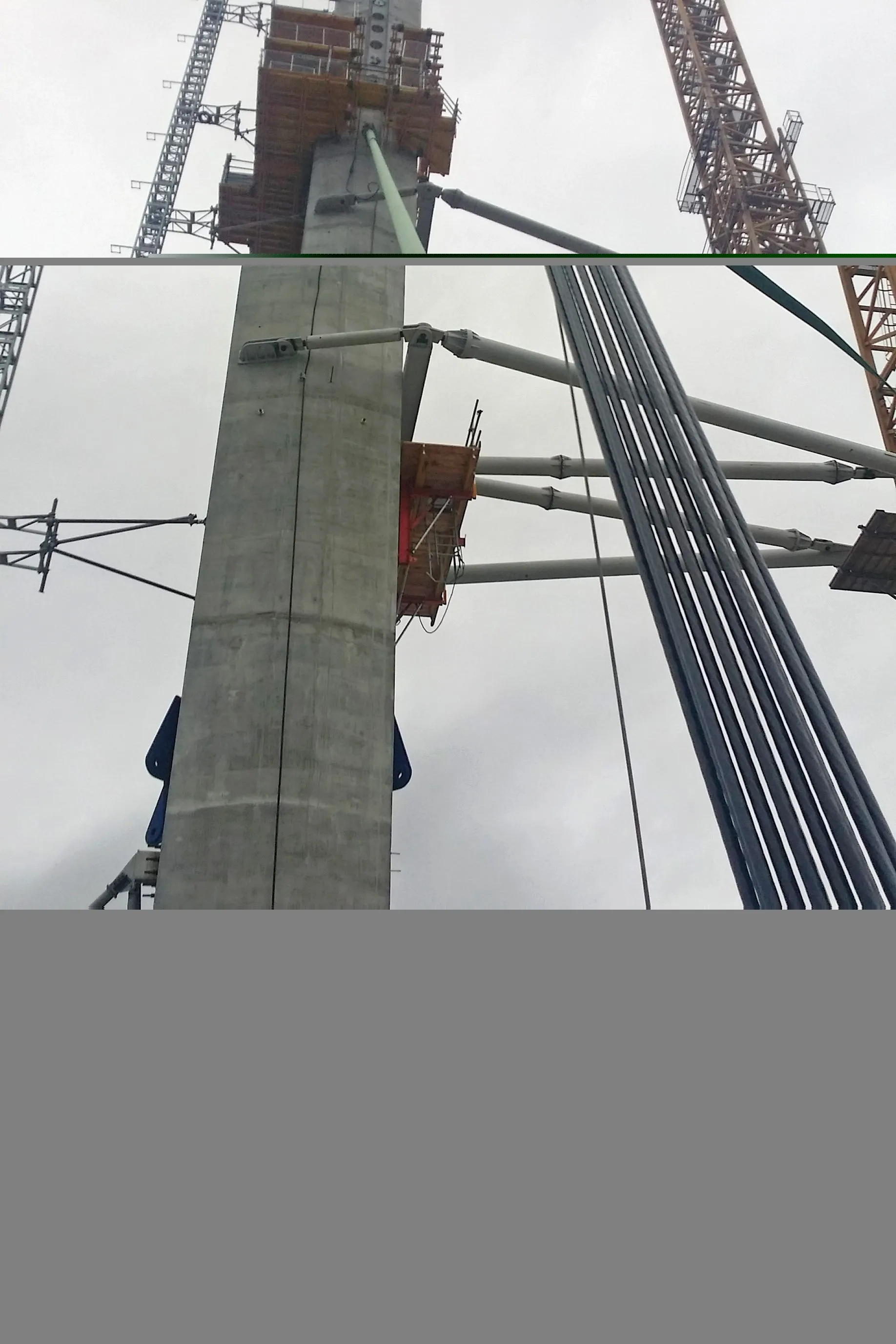
The first stay cable, 52m long, connecting the
The cable is one of 146 stay cables that will support the 1,000m-long reinforced concrete bridge, a cable-stayed structure with three pylons across the Mersey River near Liverpool in England.
"We're now entering a new, very visual phase of the bridge construction,” said Gareth Stuart, project director of the Merseylink construction joint venture. “People will be able to see the stay cables connected to the bridge deck as it emerges across the river week by week."
Form traveller machines are casting the deck segments from each side of the three pylons. Once the concrete has reached the required strength the stay cables will be installed along the bridge.
Each stay cable consists of up to 91 individual steel strands that sit inside a stay pipe - the outer casing that provides protection from weather-related corrosion. More than 1,300km of the strands will be used.
Each strand will be installed individually as Merseylink's design manager, George Moir, explained. "The first two strands are threaded through the stay pipe then the tower crane lifts the pipe up to the anchor point in the upper pylon where the top ends of the strands are fixed into place.
"The bottom ends of the strands are then attached to the anchor point in the bridge deck and stressed using a hydraulic system. This enables us to get the correct level of tension needed to support that segment of bridge deck. We then use a winch system through the stay pipe to winch the remaining strands up one by one. Once all of the strands have been installed they sit in parallel inside the stay pipe to form the stay cable," he said.
The project includes a 1km six-lane bridge and just over 1km of two approach roads. Up to 30 supporting piers will carrying the two approach viaducts.
Together the 146 stay cables have a total load bearing capacity of about 53,500 tonnes, which is heavier than the QE2 ocean liner.
The stay cables all vary in length; the shortest is around 41m and the longest is 226m.
At 80m high, the central pylon will be shorter than the two outer pylons, which at 110m high (north pylon) and 125m high (south pylon) will give the bridge it’s characteristic appearance.
Form traveller machines are casting the deck segments from either side of the three pylons and once the concrete has reached the required strength, the stay cables will be installed along the bridge.
Each stay cable is made up of between 41 and 91 individual strands of steel, with each strand capable of supporting a weight of up to 27.9 tonnes.
Each strand comprises seven wires that are galvanised, waxed and then covered in a high-density polyethylene (HDPE) coating to protect them from corrosion. The strands are delivered to site in compact coils and are installed one by one using a winch system to produce each stay cable.
A damping system, which acts like a shock absorber, is also attached at deck level to reduce the vibrations that reach the stay cable.
The Merseylink Consortium was appointed by Halton Borough Council as the project company in 2014, on a 30-year contract to design, build, finance and operate the project.
Its equity partners are Macquarie Capital Group, BBGI and FCC Construcción. The construction joint venture is made up of Kier Infrastructure and Overseas, Samsung C&T and FCC Construcción. Emovis will deliver and operate road tolling or the consortium.








